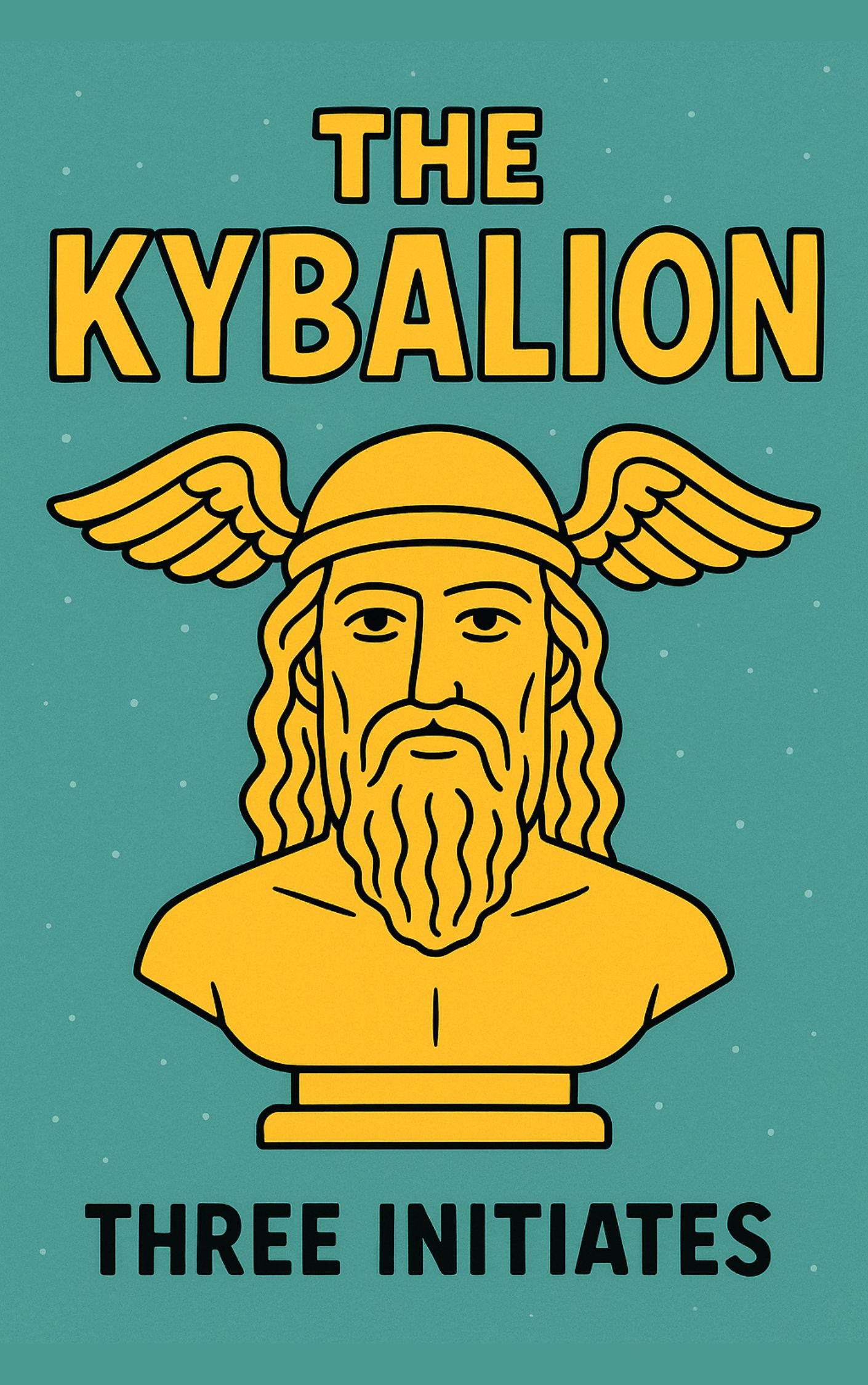Description
The Kybalion is a book first published in 1908. It claims to reveal ancient wisdom passed down for centuries, hidden from most people, but available to anyone ready to understand. It presents seven guiding principles that explain how the universe works and how people can live in harmony with it. These ideas come from the tradition known as Hermetic philosophy, inspired by the mythical figure Hermes Trismegistus, a legendary teacher of spiritual and cosmic knowledge.
The book begins with the first and most important principle: everything starts with the mind. It teaches that reality itself is shaped by thought. What we call “the world” is not only physical but also mental. In other words, the universe is like a giant thought, and everything in it is created through mind and consciousness. If this is true, then our own thoughts do not just stay inside us—they influence what we experience in life. By changing our thinking, we can change our world. This principle gives people hope, reminding them that they are not powerless, but active creators of their own reality.
The second principle is called Correspondence. It is captured in the famous phrase: “As above, so below; as below, so above.” This means the same patterns exist at every level of reality. The stars in the sky follow rhythms, and our lives on earth mirror those rhythms in their own way. Our inner world and outer world reflect each other, too. For example, if someone is full of inner conflict, they may also experience chaos in their daily life. But if they cultivate peace inside, their outer life often becomes more stable. Seeing these links helps us understand that everything is connected and part of a greater whole.
The third principle is Vibration. It says that nothing rests; everything is always moving, even if we cannot see it. A stone, a tree, our thoughts, our emotions—everything vibrates at different speeds. Low vibrations often bring heaviness, sadness, or fear, while higher vibrations create joy, energy, and clarity. This principle suggests that by raising our own vibration through positive thinking, gratitude, and awareness, we can align with higher states of being. Just as music is built on vibration, so too is life itself.
The fourth principle is Rhythm. The book compares life to a swinging pendulum that moves back and forth. Everything has its rise and fall, its high points and low points. The seasons come and go, tides rise and fall, people experience joy and sorrow. The key lesson is that these changes are natural. If we understand rhythm, we stop fighting it. Instead of clinging to the highs or fearing the lows, we ride the waves with balance. Accepting rhythm helps us find peace in the middle of life’s constant motion.
The fifth principle is Polarity. This teaches that everything exists as pairs of opposites. Light and dark, hot and cold, love and hate, success and failure—they are not separate forces, but different degrees of the same thing. For example, heat and cold are just temperature at different levels. Recognizing polarity helps us see unity beneath apparent division. It also shows us that change is possible. If hate is only one end of a scale and love is the other, then by moving our thoughts step by step, we can shift from one side to the other. Polarity reminds us that we are not trapped, because everything can be transformed.
The sixth principle is Cause and Effect. This one is very straightforward: nothing happens by chance. Every action has a result, and every result comes from a cause. Events may seem random, but in truth they follow laws. Once we understand this, we stop blaming luck or fate and instead take responsibility. Our choices, thoughts, and behaviors set causes into motion that bring about certain effects. By choosing wisely, we can shape better outcomes. This principle also encourages us to live with awareness, knowing that what we do today will ripple into tomorrow.
The seventh principle is Gender. In this context, gender does not only mean male and female. It refers to two creative forces present everywhere: the active and the receptive, the assertive and the nurturing. Both forces live within every person and within all things. The masculine side brings direction, decision, and action. The feminine side brings intuition, imagination, and growth. When these energies work together, creation becomes possible. Gender reminds us not to see life as divided but to honor both sides of existence, within ourselves and in the world.
Together, these seven principles form a complete picture of life. They show that everything is mental, everything is connected, everything vibrates, everything moves in rhythm, everything has polarity, everything follows cause and effect, and everything holds both masculine and feminine forces. By studying and applying these laws, The Kybalion claims that people can rise above confusion and live with greater wisdom and mastery.
The book also speaks of different “planes” or levels of existence. It says reality is not only physical. There are also mental and spiritual planes, each vibrating at higher speeds. When people stay only on the physical level, they may feel trapped by material concerns. But by raising their understanding, they can move to higher states of consciousness. Negative emotions such as fear and anger keep people at a lower vibration, while love, balance, and awareness help them rise. The idea is that by practicing the principles, a person can grow beyond ordinary limits and connect with something far greater.
An important point in The Kybalion is that these teachings are not for everyone. The book says that wisdom must be shared carefully. It uses the phrase: “The lips of wisdom are closed, except to the ears of understanding.” This means that true knowledge cannot simply be handed out to those who are not ready. If people misuse these ideas, they could cause harm. Instead, the right students will naturally appear when the time is right. The responsibility lies not in forcing the teachings on others, but in living them fully and allowing others to be drawn in by example.
What makes The Kybalion unique is its combination of simple principles with deep meaning. Each principle is easy to understand, but together they form a map of reality that feels both practical and mystical. It explains why life feels the way it does, why cycles repeat, why opposites attract, and why thought is so powerful. Even though it was written more than a century ago, its ideas still resonate with people seeking personal growth and spiritual understanding.
At its heart, The Kybalion encourages self-mastery. It teaches that the universe is not random chaos, but order following timeless laws. By learning these laws and aligning with them, anyone can live with more balance, purpose, and harmony. Instead of feeling like victims of circumstance, we discover we are participants in a greater design. Thought, rhythm, vibration, polarity, cause, and gender are not abstract ideas—they are tools for living better lives.
The Kybalion remains a mysterious and fascinating book. Whether or not its ideas truly come from ancient masters, its message is clear: life is shaped by universal principles, and by learning them we can rise to a higher understanding of ourselves and the world.





